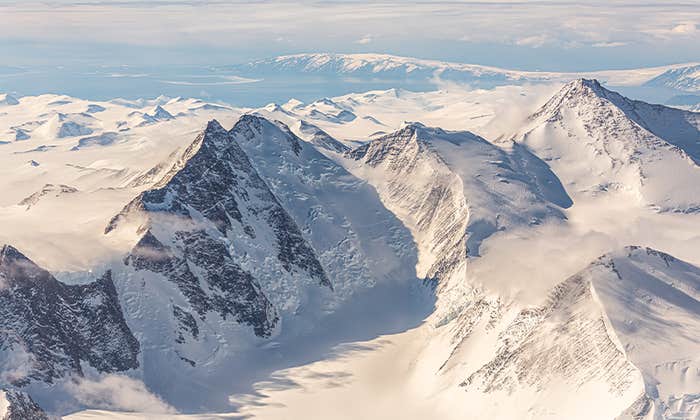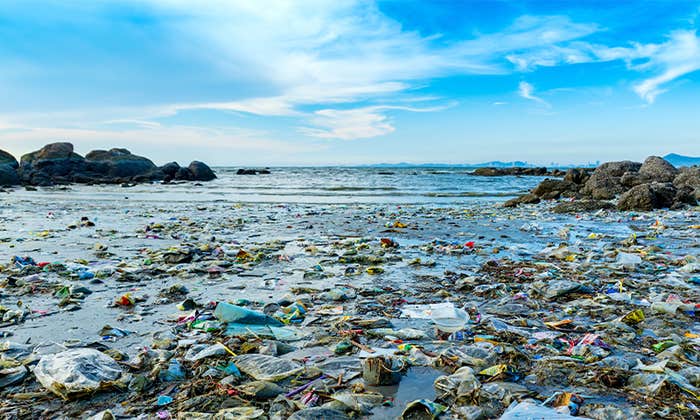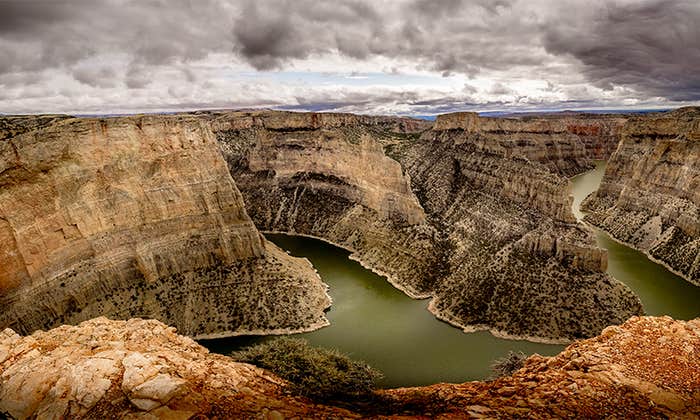In spite of all our achievements and Gaia’s benign systems of control, we are still threatened by heat. You will assume I mean global warming and, in part, I do. At first I thought global warming caused by carbon dioxide emissions would soon be catastrophic for humans and that Gaia would simply flick us aside as an annoying and destructive species. Later I thought we could manage the heat increases in the near future and should no longer regard warming as an immediate existential threat. Now, however, I believe we should do what we can to cool the planet. I cannot say too strongly that the greatest threat to life on Earth is overheating.
My point is that global warming is certainly real, but the outcomes currently being predicted by scientists, politicians, and Greens are not necessarily the ones we should most fear. Global warming is a slow process and its worst effects will be heralded by extremely uncomfortable events. The extreme weather we have experienced recently is only a mild sign of what might be on the way. But I think we have time, time we should spend cooling the planet to make it more robust.
I say this because Earth is, like me, very old. Great age may or may not bring wisdom but it certainly brings frailty. I am 99 as I write this. Hamlet bemoaned “the ills that flesh is heir to,” but he was a young man who died of excessive introspection; had he lived, he would have discovered that the ills of young flesh are as nothing compared to those that elderly flesh endures.
Planets, like humans, grow fragile with age. If all goes well, Gaia and I can expect a productive and pleasant period of decline—but people can have fatal accidents and so can planets. Our personal resilience depends on our state of health. When young, we can often withstand influenza or a car accident, but not when we are close to 100 years old. Similarly, when young, Earth and Gaia could withstand shocks like super-volcanic eruptions or asteroid strikes; when old, any one of these could sterilize the entire planet. A warm Earth would be a more vulnerable Earth.
Keeping Earth cool is a necessary safety measure for an elderly planet orbiting a middle-aged star.
We know that the Earth withstood near-fatal catastrophes in its long past. There is a great deal of evidence gathered about the impact of an approximately 1-kilometer-diameter rock in the South Pacific about 2 million years ago. The consequences appear to have been devastating, but, interestingly, there is almost no indication of long-term damage to the biosphere. Recent research, however, suggests the risk may be increasing. Scientists studying impact craters on the moon found that there had been a steep rise in the number of asteroid strikes in the last 290 million years. Astonishingly, we are now three times more likely to suffer an impact than the dinosaurs; they were just very unlucky.
Gaia, in the past, could take these things in her stride, but can she now? She already struggles to maintain homeostasis—a stable dynamic condition—in the calm between impacts. Now, an asteroid impact or a volcano could destroy much of the organic life the Earth carries. The remnant survivors might be unable to restore Gaia; our planet would quickly become too hot for life.
So, as well as the climatic effects of warming, there are other problems that are more serious than we can imagine—accidents we don’t or can’t prepare for. Keeping Earth cool is a necessary safety measure for an elderly planet orbiting a middle-aged star.
Heat is why we have to keep a close eye on our planet and not think so much about Mars. As NASA’s wonderful rovers continue to gather evidence from Mars, our relative ignorance of our own oceans increases. Not for a moment would I suggest that NASA’s exploration was not worthwhile, but why have we done so little to gather information about our own planet? Our lives may depend on understanding it properly.
We were stunned when the astronauts revealed in 1969 the beauty of our planet seen from space. It took Arthur C. Clarke, the science-fiction writer and inventor, to observe how wrong it was to call this planet Earth when, clearly, it is Ocean. Despite being 50 years ago, this discovery that we live on an ocean planet is only just beginning to penetrate the dusty science of geology. It is shameful that we know far more about the surface of Mars and its atmosphere than we know about parts of our oceans.
It is also risky. After the sun, the sea is the primary driver of our climate. It is vital for our survival that the sea is kept cool. It is easy to understand this just by going on a typical holiday. There we find a hot, sandy beach lapped by clear water. This water is seductive, but it is a dead zone. Whenever the surface temperature of the ocean rises above 15 degrees Celsius, the ocean becomes a desert far more bereft of life than the Sahara. This is because at temperatures above about 15 degrees Celsius the nutrients in the ocean surface are rapidly eaten and the dead bodies and detritus sink to the regions below. There is plenty of food in the lower waters, but it cannot rise to the surface because the cooler lower ocean water is denser than water at the surface. This lack of life in warmer waters explains why so often they are clear and blue.
This is important because, as the photographs from space show so dramatically, Earth is a water planet with nearly three-quarters of its surface covered by oceans. Life on land depends on the supply of certain essential elements such as sulphur, selenium, iodine, and others. Just now these are supplied by ocean surface life as gases like dimethyl sulphide and methyl iodide. The loss of this surface life due to the heating of these waters would be catastrophic. Cold water (below 15 degrees Celsius) is denser than water warmer than 15 degrees Celsius. Because of this, nutrients in cold water can no longer reach the surface.
A more serious threat to life would arise if ever the ocean surface temperature rose into the 40 degrees Celsius region, at which point runaway greenhouse heating caused by water vapor would occur. Like CO2, water vapor in the atmosphere absorbs outgoing infrared radiation and so prevents the Earth from cooling by radiating heat away. High levels of water vapor in the atmosphere cause warming and this creates a feedback loop, increasing the water content of the atmosphere by evaporating water from the sea.
We should not simply assume that the Earth is a stable and permanent place.
In discussions of global warming the role of water vapor is seldom mentioned. When we put carbon dioxide in the air by burning fossil fuel, it stays there until removed by, for example, the leaves of a tree. Burning fossil fuel also puts water vapor in the air, which, unlike carbon dioxide, stays there only if the air is warm enough. On a cold winter day, even your breath condenses as a cloud of mist. The abundance of water vapor in the air simply follows the temperature. When water condenses as mist or as cloud droplets, it can no longer exert its greenhouse effect. In some circumstances, such as cloud layers near the sea surface, their presence has a cooling effect by reflecting sunlight back to space. But cirrus clouds high in the atmosphere have a warming effect. The presence of water vapor in the air makes climate forecasting a complex job and it is easy to see why the forecasters sometimes make mistakes.
We can help natural processes that keep the water vapor content of the air low by avoiding the burning of carbon fuel of any kind. In general, I feel strongly that our need for energy should be treated as a practical problem of engineering and economics, not politics. I feel equally strongly that the best candidate to supply these needs is nuclear fission, or, if it becomes available cheaply and practically, nuclear fusion, the process that sustains the heat of the sun. There is a further temperature limit we should watch closely. You may have noticed this fatal figure appearing on world weather charts during the freakishly hot summer of 2018. It was 47 degrees Celsius. This is a just about liveable temperature for humans—ask the people of Baghdad—but it is close to our limit. In the Australian summer in January 2019 there were five days in which the average temperature was above 40 degrees Celsius—Port Augusta reached 49.5 degrees Celsius.
In the 1940s, as part of our wartime work, my colleague Owen Lidwell and I measured experimentally the temperature at which the cells of skin were irreparably damaged by heat. This would mean burning the skin of anaesthetized rabbits. I found this request repellent and we decided to burn ourselves instead. This we did using a large, flat flame of burning benzene vapor. As you might expect, it was exceedingly painful. Contact with a 1-centimeter-diameter copper rod kept at 50 degrees Celsius would cause a first-degree burn in one minute. Higher temperatures caused burning more rapidly; at 60 degrees Celsius it took only one second. At temperatures below 50 degrees Celsius there was no burning in five minutes. Human skin cells are typical of mainstream life in their reaction to high temperatures. It is true that some highly specialized forms of life called extremophiles can live at temperatures up to about 120 degrees Celsius, but their capacities and rate of growth are minimal compared with mainstream life.
(Incidentally, as we burnt ourselves, we were watched and looked after by the Institute’s physician, Dr. Hawking. He grew quite intrigued by our capacity to endure pain and invited me to dinner with him and his family at their home in Hampstead. In the course of the evening his wife, also a scientist at the Institute, asked me if I would hold their newly born baby while she performed an intricate preparation for dinner. Having by then two children of my own, I felt quite ready to do so and for a brief period held Stephen Hawking in my arms.)
High temperatures make us vulnerable. We are currently in a warm period of the glacial cycle and if we now suffered a catastrophe—an asteroid strike or super-volcano eruption—that led to a failure to pump down carbon dioxide, we could be in mortal danger. The Earth’s average temperature could rise to 47 degrees Celsius and, comparatively quickly, we would enter an irreversible phase leading to a Venus-like state. As the climatologist James Hansen vividly puts it, if we don’t take care, we will find ourselves aboard the Venus Express.
On the way to this sterile state the Earth would probably pass through a period when the atmosphere at the surface was supercritical steam. The supercritical state is curious: It is neither gas nor liquid. It shares with liquids the capacity to dissolve solids, but like a gas it has no boundary. Even rock dissolves in supercritical steam and, from the solution, quartz and even gemstones such as sapphire crystallize as they cool.
If the Earth became hot enough for the ocean to reach the supercritical state, rocks such as basalt would dissolve and release the hydrogen of water as a gas. Long before this, the oxygen of the air would have vanished and in this oxygen-free atmosphere hydrogen would escape to space because the Earth’s gravity is insufficient to hold hydrogen atoms. Indeed, hydrogen would be escaping now but for the presence of oxygen, the atoms of which act like security guards and capture hydrogen atoms when they try to escape the Earth.
So 47 degrees Celsius sets the limit for any kind of life on an ocean planet like the Earth. Once this temperature is passed, even silicon-based intelligence would face an impossible environment. It is even possible that the floor of the ocean would enter the supercritical state and in places where the magma emerged there would be no separation between rocks and supercritical-state steam.
We should be amazed by and grateful for the remarkable achievement of the Gaia system in pumping down carbon dioxide to levels as low as 180 parts per million, the level it reached 18,000 years ago. It is now 400 parts per million and rising, with the burning of fossil fuel responsible for about half of this rise.
Don’t forget that, without life, carbon dioxide would have been much more abundant than now. If you want to know where life put the carbon dioxide, visit a typical chalk cliff, such as the ones at Beachy Head in Sussex. If you look at the chalk through a microscope, you will find it is made of tight-pressed calcium carbonate shells. These are the skeletons of coccolithophores that once lived near the surface of the sea. And in greater quantities are the beds of limestone that are everywhere on the Earth’s surface. If these reservoirs of biogenic carbon dioxide had been returned to the atmosphere as gas in geologically relatively recent times, we would be just like Venus—a hot, dead planet.
Even so, it is very unlikely that, in the imaginable future, the entire surface of the Earth will reach anything like 47 degrees Celsius. The current average temperature is about 15 degrees Celsius. But it is conceivable that, with feedback loops, especially the melting of the polar ice caps and methane released from permafrost, a global temperature of, say, 30 degrees Celsius may be a tipping point that could accelerate heating further. As with much of climate science, we just do not know.
What is clear is that we should not simply assume, as most people do most of the time, that the Earth is a stable and permanent place with temperatures always in a range in which we can safely survive. Some 55 million years ago, for example, an event known as the Palaeocene/Eocene Thermal Maximum took place. This was a period of warming when temperatures rose about 5 degrees above their present level. Animals such as crocodiles lived in what are now the polar oceans, and all the Earth was a tropical place. For a while I thought that if such a rise in temperature could be withstood, then why bother too much about the mere 2 degrees rise of temperature climate scientists say we should avoid at all costs? Not only this, but in places like Singapore people enjoy life where the temperature, year-round, is more than 12 degrees above the average. But I was wrong.
It was thinking about the consequences of asteroid impacts and other accidents that made me see why the Earth needs to stay cool. Yes, a rise in temperature of 5 or even 10 degrees could probably be withstood, but not if the system is disabled, as it would be if there were an asteroid impact of the severity now thought responsible for the Permian extinction. It might also happen through one of the devastating volcanic outbursts that have occurred in the past. So I now think our present efforts to combat mere global warming are vital. We need to keep the Earth as cool as possible to ensure it is less vulnerable to accidents that might disable Gaia’s cooling mechanisms. ![]()
Excerpted from James Lovelock’s 2019 book Novacene. Lovelock, the scientist behind the Gaia theory—which proposes that the Earth functions as a single self-regulating system—died in 2022 on his 103rd birthday. This article is reprinted with permission from MIT Press Reader.
Lead image: Ad Gr / Shutterstock
































